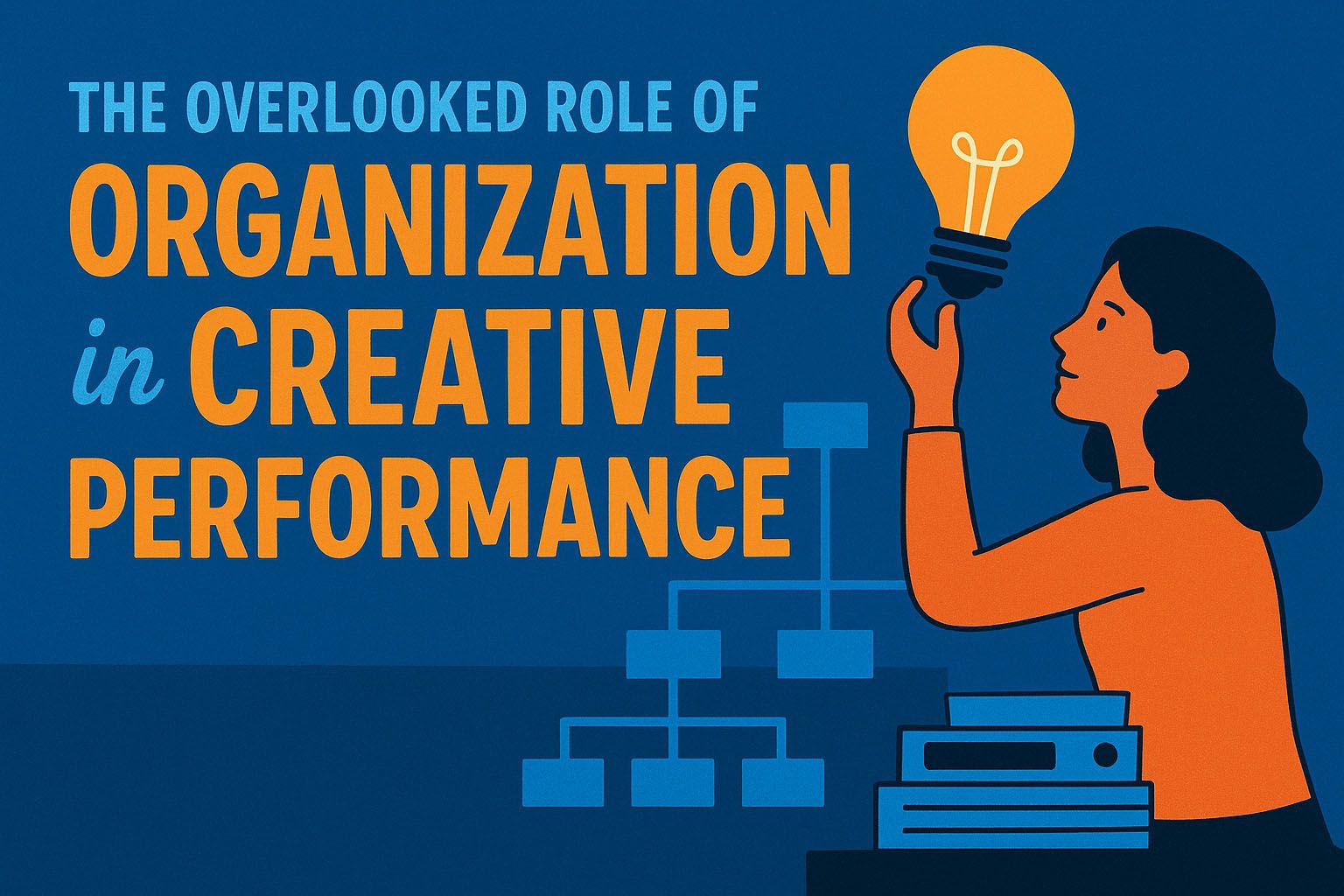
The Overlooked Role of Organization in Creative Performance
Creativity tends to flourish in free, expansive spaces, but something that many neglect to note is how organization moves to strongly enable it. A chaotic environment can siphon focus, dissipate ideas, and erect unneeded obstacles to inspiration. When tools, resources, and space are implemented thoughtfully, creative work flows and comes to a more pleasing end more easily.
A systematic system does not need to be strict. It can, in fact, provide freedom. If you know precisely where everything lies, creative individuals can search less and create more. Whether it’s a clear desk, a systematic computer folder, or a clear project pipeline, being systematic can function as invisible assistance, making the creative process more powerful, swift, and concise. It’s usually the little steps behind the stage that have the greatest impact in terms of performing.
How Clutter Blocks Creativity
Many creative people assume that a little chaos helps them think, but clutter often does the opposite. A disorganized space can make it harder to focus, slow down workflow, and cause creative burnout over time. When your surroundings are messy, your brain has to process unnecessary details, leaving less energy for big ideas. Even practical steps like using storage units climate controlled to keep tools and materials safe can make a noticeable difference in how easily inspiration flows.
Myth vs reality: Many believe a messy space equals creative genius. In reality, clutter often creates mental noise, making it harder to concentrate. A clear, well-organized space gives your mind more room to explore new ideas and follow creative sparks.
When distractions are reduced, creative performance becomes more natural. You don’t have to constantly fight for mental clarity. With less chaos, ideas can surface faster, and creative energy flows without unnecessary friction.
Setting Up for Creative Flow
The best organizational systems for creative work aren’t complicated. They’re simple, flexible, and easy to maintain. A good setup lets you find what you need quickly, helps ideas move without interruption, and keeps your workspace inspiring. This can mean grouping materials by project, using clear labeling, or even setting up zones for different tasks.
The goal isn’t perfection—it’s accessibility. When your space supports your flow, it removes invisible barriers between your thoughts and your output. That small shift can turn scattered energy into focused momentum, allowing creativity to thrive more naturally and effectively.
Tools That Boost Efficiency
When it comes to creative performance, a few simple tools and practices can make a big difference. But before jumping into solutions, many people have practical questions about how to keep their creative flow uninterrupted.
How can organization make me more creative?
A structured environment frees your mind from distractions. When your tools and materials are easy to find, you spend less time searching and more time creating.
What tools help with creative organization?
Digital project boards, labeled containers, and flexible storage options are simple ways to build structure. These tools reduce stress, making it easier to stay in your creative zone.
Do I need expensive systems to stay organized?
No. Many of the most effective systems are low-cost or free. What matters most is consistency and choosing what works best for your workflow.
When your workspace is designed to support your mind, inspiration comes more naturally and lasts longer.
Everyday Habits That Help
Good organization isn’t just about tools—it’s about daily habits. These small actions build momentum, keeping creative energy clear and focused.
Fast actionable tips:
- Group materials by project to save time.
- Set a short daily reset routine to tidy up.
- Use labels to make everything easy to find.
- Keep a clear desk space to reduce visual noise.
- Schedule short breaks to keep your mind fresh.
Common mistakes to avoid: Skipping small organizing habits, keeping too much unnecessary stuff, and working in a cluttered environment can all slow down your creative flow. By keeping systems simple and repeatable, organization turns into a quiet creative partner rather than another task on your list.
Real Stories That Inspire
One day, a professional illustrator described how having it together transformed her thinking. For years, she'd worked out of a tight, messy home studio where her paints, sketchbooks, and computer equipment lay sprawled. Her thoughts were just as fragmented. Then she decided to reorganize: organizing her supplies, cleaning off surfaces, and instituting a uncomplicated system to access whatever she needed right away.
Within a week, she saw something surprising. She wasn’t working faster, she felt more confident. Her energy wasn’t going to chaos control but to her art. She also found that she was venturing out to try new ideas more effortlessly since she wasn’t encumbered by distractions.
Benefits versus risks: Well-organized time equals time saved, focus enhanced, and confidence boosted creatively. Poor organization, meanwhile, equals stress, diffused thinking, and lost potential for growth creatively. Opting to organize isn’t control; it’s making space for freedom.
Her case indicates how little alterations backstage have a snowball impact upon performance. When your environment encourages your creativity rather than resists it, your work flows better, repeats itself more reliably, and is more satisfactory.
Building a Strong Foundation
Organization is not just about tidiness—it’s about unlocking creative potential. It removes barriers that block ideas and gives your mind the space it needs to create freely.
When you make structure a quiet part of your process, you build a strong base that supports inspiration whenever it strikes.
The overlooked role of organization in creative performance is not just practical—it’s transformative. Embracing it can help every creative mind work with more clarity, ease, and confidence.






